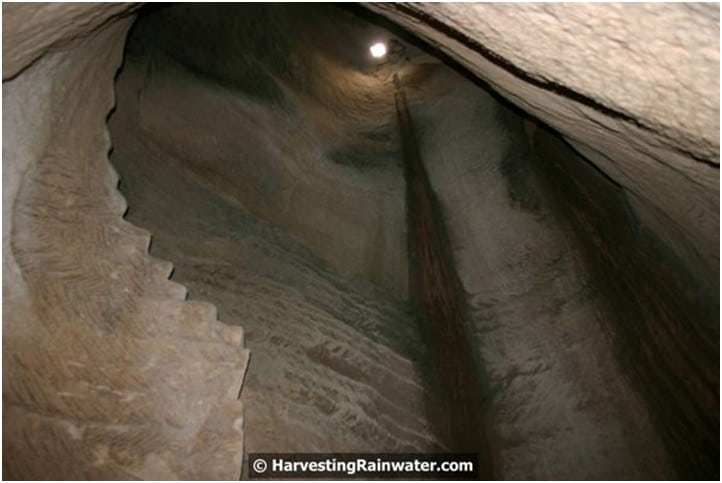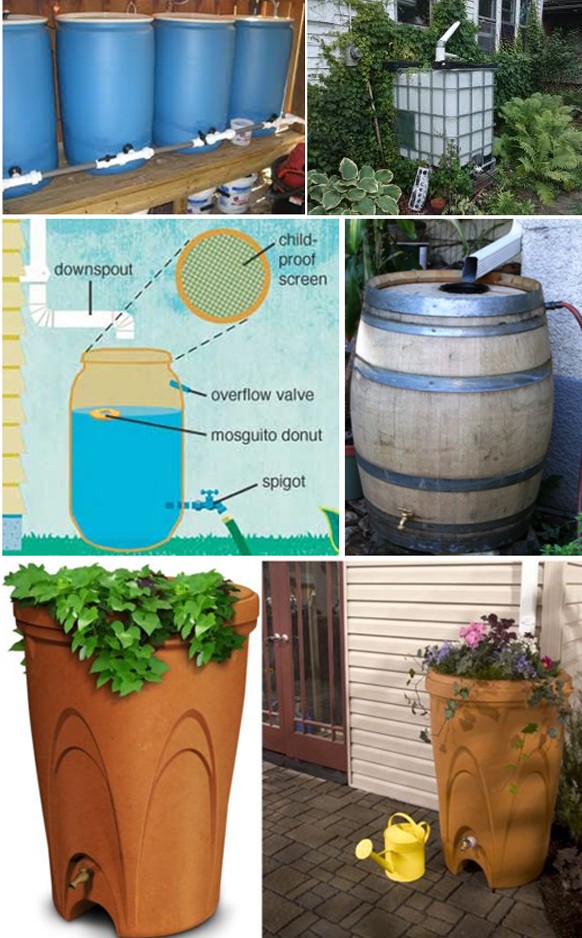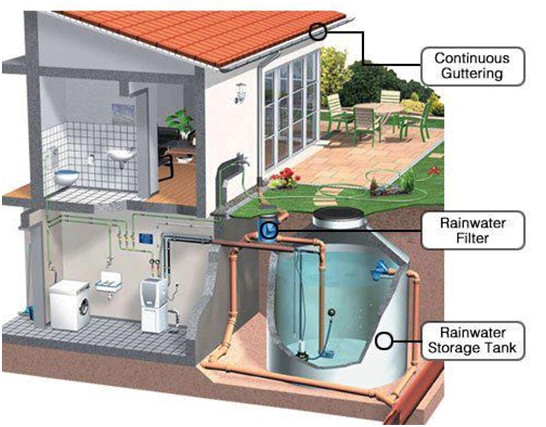Click below for interview
milan bender on rainwater, the ins and outs and in between’s, october 22, 2013
https://soundcloud.com/oneradionetwork/102213_bender_milan_rainwater
By Milan Bender
When and where was the first rainwater harvesting system built?
Archeological evidence suggests that rainwater was being collected for use as early as 3,000 B.C. in parts of India and the Middle East. Cisterns are even mentioned several times in the Old Testament. The prophet Jeremiah was imprisoned in a cistern by King Zedekiah. Joseph, the son of Jacob, got tossed in a cistern after his good-for-nothing brothers took his tunic.
In China, rainwater harvesting was being practiced almost 6,000 years ago.
In Texas, Mescalero Apaches used natural rainwater catchment systems near El Paso nearly 10,000 years ago to collect rainwater. When Anglos arrived, cisterns were among the first things they built.
Austin has numerous antique cisterns. The French Legation, which was built in 1840 and is the oldest frame structure in Austin, has a cistern outside the kitchen. “The cistern was probably built in the 1880s after the springs on the property dried up,” says the Legation’s director, Diane Long.
Charlie Mackie, of the Heritage Society of Austin, says that cisterns were a critical source of water for Austinites after the 1937 flood contaminated the city’s water treatment plant. Mackie said many residents used water from a cistern at the Smoot House, an historic house at 1316 W. Sixth that was built in 1877. He also says there was a 25,000-gallon cistern in the courtyard of the building that served as the temporary Capitol between 1883 and 1888.
(“The Brethren of Cisterns” by Robert Bryce)
Images of Ancient Rain Water Cisterns
Rain Water Catchment Facts in The “Modern” World:
Rainwater harvesting is being actively pursued on almost every continent of the world. It is most prevalent in the developing countries of Asia, Africa and Latin America where dependence on seasonal rain necessitates that water be collected and stored where and when it becomes available. Even developed countries in Europe and the Americas such as Germany and the United States have started harvesting rainwater as available supplies dwindle or become contaminated.
Cisterns and rainwater catchments are now mandatory in new construction in the U.S. Virgin Islands and Bermuda.
The state of California offers tax credits for cisterns.
The Environmental Protection Agency recently estimated that there are now some 200,000 cisterns in use in this country.
Japan and Germany offer financial incentives for rainwater collection.
The World Bank is financing the construction of cisterns in China and Egypt.
Austin Texas offers up to $5,000 dollars in rebates depending on size of system
Why is Rain Water Catchement Becoming So Popular Once Again?
Much has changed over the last century – cities have sprung up, wells have been dug, lakes built and municipal water supplies established. Over the same time, springs have reduced their flow or dried up, rivers are more polluted and the base flow has decreased.
Due to population growth and urban sprawl, our nation is no dominated by houses, streets and other impervious cover. This increases storm water runoff and decreases water infiltration into the ground where it falls. All of this has a direct impact on the water quantity and quality issues our nation is now facing.
Today there is a renewed interest in the time honored tradition of rainwater harvesting primarily due to:
Concerns about having access to high quality water, both now and in the future
The rising environmental and economic costs of providing water through centralized water systems or well drilling
Health concerns linked to the sources and treatments of water
The cost efficiencies associated with rainwater harvesting both now and in the future
Rainwater’s purity
Some of the Benefits of Rainwater Include:
Restores underground aquifers
rainwater has some intrinsic qualities that should make it attractive to the user:
It is pure, soft, and only slightly acidic
Plants tend to thrive under rainwater irrigation
appliances last longer because the water is salt and mineral free
The water tastes good because it is relatively free of chemicals
It is free of disinfectant byproducts, salts, minerals, pharmaceuticals, fluoride, ammonia, chlorine, iron, sulfur, VOC’s
Is it better than having a well?
Typically the cost is the about the same for a well although maintenance is usually cheaper on a rainwater system.
The potential that the well can be contaminated or the water supply can diminish are out of your control
How does it work and what does a rainwater catchement system look like today?
Examples of a Rain Barrel System for outdoor watering:
Example of a Whole House Rainwater Catchement System:
A well equipped system would include:
1) Gutter Guards
2) First Flush Diverter
3) Leaf Beater
4) Storage Tank
5)Pre-filter
6) Pressure Regulating Smart Pump
7) Sediment Filtration
8) Carbon Filtration
9) Ultra Violet Light
10) (water then goes in to the house) Wireless Tank Level Indicator, water meter, and auto switch to city water
Sizing your System:
Sizing your rainwater harvesting system depends on the amount of rainfall, size of collection area, storage capacity, and the household’s level of demand for water.
For outdoor uses of rainwater, the types of plants, amount of exposure to direct summer sun, soil conditions, presence or lack of mulch, and size of the area will determine how much irrigation water is needed. Large landscapes with large water demands are not readily accommodated by rainwater catchment systems.
Storage capacity for indoor uses of rainwater can typically be more readily gauged; although this is not a precise science due to the vagaries of rainfall and personal habits.
A conserving household may use 25- 40 gallons of water per person per day (although the average for Dallasites is 213 gpd). Multiply the number of persons in the household by the average use (40 gallons per person is a generous amount, 25 gallons is quite conservative. The longest drought in 50 years lasted 75 days in our area. Multiply the total of the number of persons times daily use times 100. This gives a safety factor of 25 days over the worst-case scenario of the last 50 years. The total is the amount of storage capacity required.
Example: 3 people use 40 gallons per day each. 3 (persons) x 40 (gallons per day per person) x 100 (days) = 12,000 gallons of storage required.
Determining Catchement Area:
To determine the square footage of catchment area of a house, use only the house’s footprint. (The actual area of roof material will be greater due to the roof slope. However, the amount of rainfall on the roof is not affected by the slope.)
Instructions
How to Calculate Rainfall for Harvesting
1
The first thing to do is to figure the area of the structure. Begin by using the measuring tape, and measure your roof from one eave to the next. You can do this on the ground because it doesn’t matter whether your roof is flat or sloped. So let’s say the measurement is 30 feet X 50 feet. Write this down.
2
You now have the measurements necessary to find the square footage of your roof.Multiply 30 feet times 50 feet. That’s 1,500 square feet. And that is your catchment area. Write that down. Area = length (feet) X width (feet).
3
Now, check the rain gauge. For simplicity, let’s say that it rained one inch. Write down the number of inches.
4
An inch of rainfall on a square foot of surface area yields .623 gallons.
5
Now, multiply .623 gallons by the number of surface square feet. In this case it would be 30 feet X 50 feet= 1,500 square feet X 1 inch X .623 gallons per square foot per inch of rainfall. That comes to 9.345 gallons per square feet.
6
Let’s say instead it rained 2.5 inches. Then the calculation would read 30 feet X 50 feet=1,500 square feet X 2.5 inches X .623 gallons per square foot per inch of rainfall. The total number of gallons here is 2,336.25 inches of rainfall
The main cost factors:
Gutters and Storage tanks:
Gutter Guards:
$20 per foot for new construction
$12 per foot retro fit gutters
Storage tank Cost:
60cents to a $1 per gallon for a fiberglass or poly tank
And as much as $5 per gallon for a welded steel tank
*price per storage gallon goes down as the size goes up
You can buy wood, steel, polyethylene, or fiberglass tanks.
{Galvanized steel tanks in sizes above 10,000 gallons are often competitive with or less expensive per storage gallon than equivalent-sized polyethylene and fiberglass tankswater for drinking, costs for disinfection must be added to the total cost.}
Maintenance
Annual Tasks:
1) Tank cleaning and inspection
2) Complete System Inspection
3) U.V. bulb replacement and quartz sleeve cleaning
4) Quarterly Carbon filter changes
5) monthly to bi-monthly sediment filter changes
6)maintain “plant free” zone around perimeter of tank to avoid puncture by roots
What is the overall annual maintenance cost of a rain water catchment system?
For example, an average residential catchment system will require one UV bulb annually at a cost of $89. each year. Sediment filters need to be changed monthly, so you will need 12 sediment filters at a cost of $3.95 each. Carbon filters need to be changed quarterly at an average cost of $9.99 each. Add the cost of electricity to run a pump from the tank to your home, an average cost of $10. per month. The overall operating cost of a complete rainwater catchment system can be as little as $296.36 per year or $24.69 per month, for a typical Hawaii home. This compares with an average municipal water bill of $40 a month at today’s pricing.
What else should I consider when looking into rainwater catchement?
Rain water catchement is a way of life that involves more than just the technical side.
70% of municipal water is used for watering yards! So let’s start there:
How can you use less water on your yard?
To water 1 acre of turf landscape with 1 inch of water requires about 27,000 gallons
Water used for foundation plantings and gardens can be cut in half by using drip irrigation and mulch instead of sprinklers or sprayers. St. Augustine turf needs about an inch of water a week to stay green. Several varieties of Bermuda need only half that amount. Buffalo grass needs almost no supplemental watering once established, but it needs a lot of sun. Consider replacing your sunnier areas of St. Augustine with Buffalo grass, and creating mulched areas in the shadiest spots planted with native or adapted low water use plants. You can probably reduce your turf water use by half or better.
What happens if annual rainfall drops in my area?
If your system is properly sized to begin with this should not be a issue. If you find yourself running out of water several times a year, but during heavy rains your overflow is working overtime, you may need a larger or secondary catchment tank. If your needs increase you can always addto the size of your catchment capacity to avoid the cost of buying supplemental water
Average water consumption per day in the US is 80-110 gallons per day
Average water wise person uses 40-60 Gallons Per Day
As you observe and connect with your water source you naturally become water wise
Why does grass look so much greener after a rain?
Rain clouds form in the sky when water vapor in the atmosphere cools and forms droplets. These droplets also contain dissolved nitrogen that comes from the air. (Nitrogen is the main active ingredient in commercial lawn fertilizer). Rainwater, whether it comes as rainfall or from a rainwater storage tank, greens up your grass with free, natural fertilizer. And you will be “greener” since this free fertilizer isn’t made from hydrocarbons.
|
Typical water use at home
|
|
| Bath | A full tub is about 36 gallons. |
| Shower | 2 gallons per minute. Old shower heads use as much as 5 gallons per minute. |
| Teeth brushing | <1 gallon, especially if water is turned off while brushing. Newer bath faucets use about 1 gallon per minute, whereas older models use over 2 gallons. |
| Hands/face washing | 1 gallon |
| Face/leg shaving | 1 gallon |
| Dishwasher | 4 to 10 gallons/load, depending of efficiency of dishwasher |
| Dishwashing by hand: | 20 gallons. Newer kitchen faucets use about 2.2 gallons per minutes, whereas older faucets use more. |
| Clothes washer | 25 gallons/load for newer washers. Older models use about 40 gallons per load. |
| Toilet flush | 3 gallons. Most all new toilets use 1.6 gallons per flush, but many older toilets used about 4 gallons. |
| Glasses of water drunk | 8 oz. per glass (did you remember to drink your 8 glasses of water today?) |
| Outdoor watering | 5 to 10 gallons per minute |







'Collecting Your Own Rain Water: Rain Water Catchement 101' has 1 comment
November 7, 2013 @ 6:31 am NISHANT YADAV
That is best information about rainwater harvesting end this is the best article about rainwater harvesting. i never read such type of article on rain water harvesting. thank you for that information . The best thing in your article is that you mention all about the use of water per person . so by this we can measure accurate use of water ,which we have saved in rain